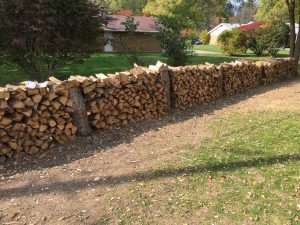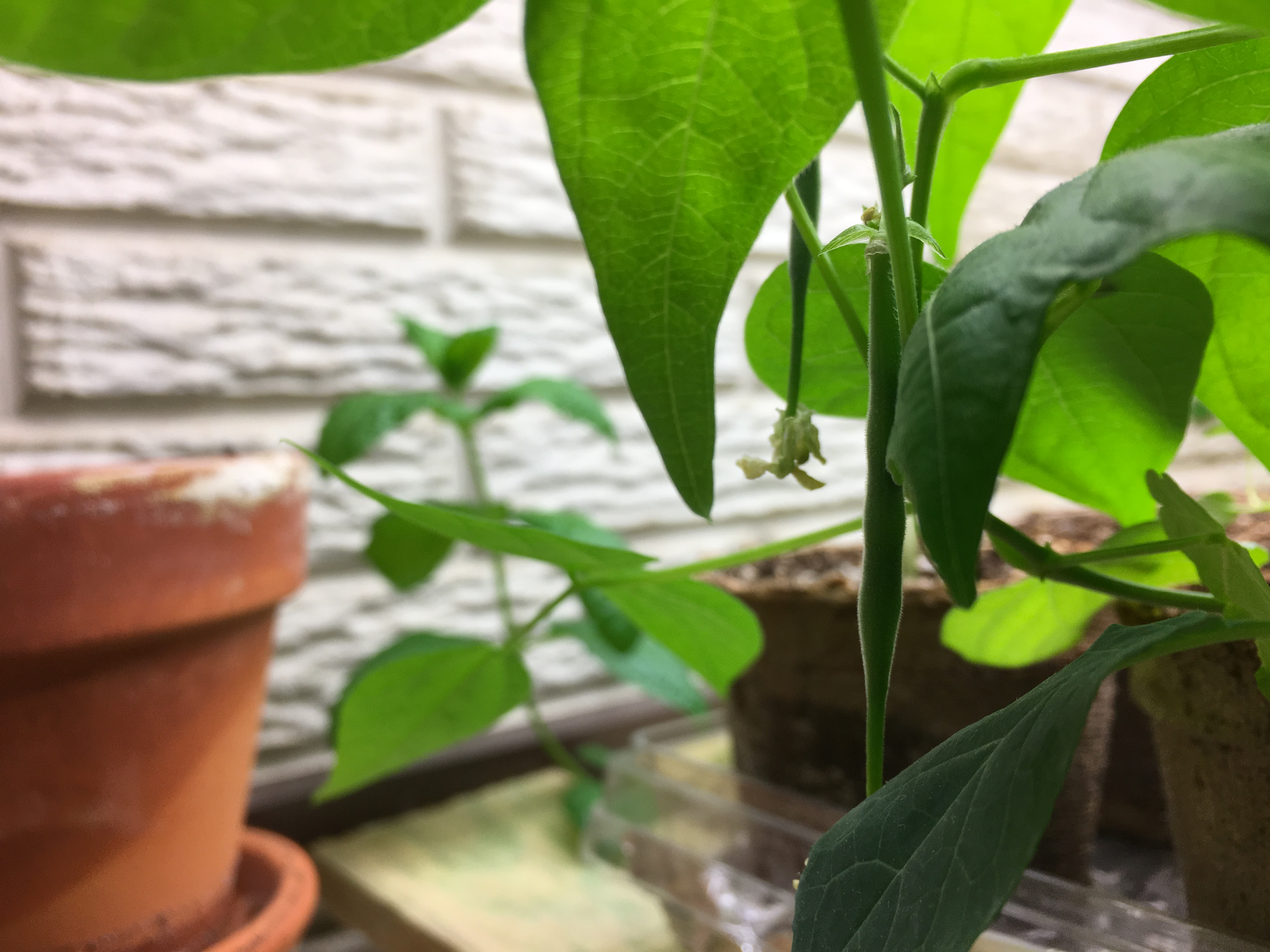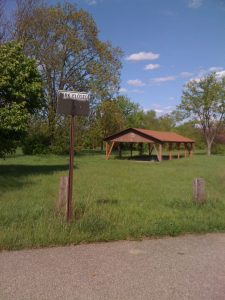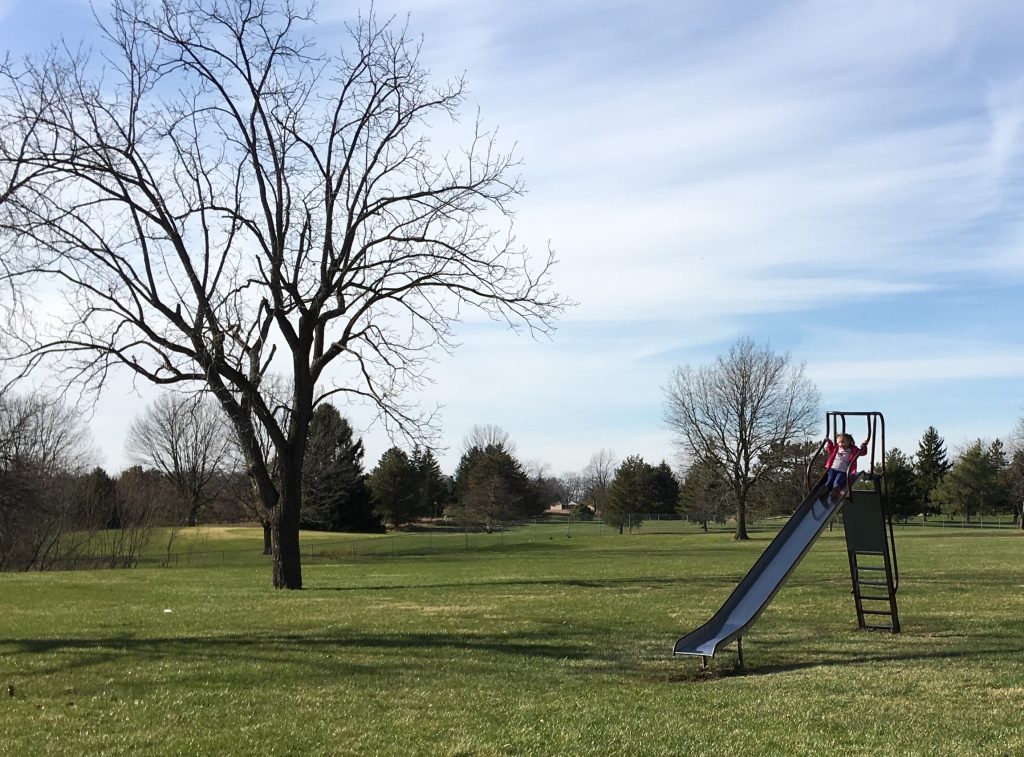There’s two things I learned from having moved to the suburbs. First, everyone wants to meet me–not necessarily because people are interested in building their social network, but because I might be an axe murderer (more on this later), and admittedly that’s information I’d want to know about my new neighbor too. Second, older men assume I have no idea what I’m doing. In all honesty, this second point I had already known. Even I had to suppress the urge to run out and tell the neighbor’s son, who had taken advantage of a warm day for some target practice, that he was shooting his bow wrong. But still, this concept became even more pronounced than I had anticipated. Maybe with our forced vicinity, thus lifted the veil of respectful indifference to which, having lived in apartments, I was so accustomed.
Shortly after purchasing our house, BP (the oil company) paid us a visit. The property’s southeastern border was under an easement, as a pipeline was buried there. This suddenly became an issue as the trees, which had been growing there for at least 50 years, were on the easement, and BP assured us that “the government” was now requiring aerial line-of-sight assessment of the pipeline’s path. We found out about the easement the day before signing, but after discussion, decided it was not sufficient to deter us from completing the purchase. And now, suddenly those trees were a problem and had to go. I mentally weighed who I trusted less: an oil company, or my own government. This question, when posited to my contemporaries, inevitably elicits laughter.
Whatever. At least this was happening before we did anything with the yard. And besides, they were ripping out the honeysuckle–a project which would have taken us years. One problem had been traded for another, but we’d also have more sun now for a vegetable garden, so ultimately we came out ahead.
Two oaks and two pines later, I had a rather large pile of wood. And in a time when I was otherwise occupied with the house’s interior, I figured that the wood could wait. My neighbors, however, disagreed. Like an unkempt lawn, the sight of un-split and un-stacked timber violated the order demanded of a suburban yard. Three neighbors knocked on my door to inquire–two whom wanted the wood, and one who was simply curious. I decided then that I would begin chopping. Surely that would send the message that the wood was not available, I was bringing order to chaos, and therefore people would stop asking me about it, right?

Wrong. Four more neighbors approached me in the act of chopping, and each time we’d have a general discussion about BP, the easements, that’s a lot of wood, and boy do I have a lot of work to do. The village elder, as I call him (the neighbor across the street), lent me a second wedge. Another neighbor’s son offered to do some of the chopping (I assume he was after some cash). But it was the man with the maul who created the most awkwardness.
One day I was chopping away, and I caught a glimpse of a man walking through the yards. Apparently, the children in this neighborhood have learned from their parents that property lines don’t define where you can walk (see the Get Off My Lawn! series). No matter, he was on a mission of good faith. I could tell this because he was carrying a large axe. Ordinarily, that would seem less than friendly, but I took it in proper context, and besides, I had an axe too, and I’m much younger than he. Alas, he was not seeking an axe fight.
It was a maul, to be exact, and he felt that it was a necessary tool to aid in this Sisyphean task–the missing tool that I so desperately needed. Honor-bound to a stranger’s courtesy, I accepted the boon, and used it with limited success for the remainder of the day. Ultimately the wood was just too green, so the benefits of the maul fell short. Then, with the weekend at an end, it was time to return it.
It was at this moment that I realized I didn’t know where he lived. I had a vague notion though, and so I took off on the way from which I had seen him come–through the yards, disregarding property lines the way he had (hey, I live here now too). During the journey, I casually waltzed through a backyard in which a woman lay in a hammock, talking on her phone. It was an uncomfortable moment, me a random man bursting through the bushes with a large melee weapon, but she didn’t acknowledge me. I hadn’t thought I was being particularly stealthy, but people on their phones drive into emergency vehicles and stationary objects, so I may have been at an advantage. Still, maul or not, I’m a gentleman, so I cleared my throat and lifted the maul in salutation. Yet even after that, she didn’t acknowledge me. I know she had to of seen me–she was facing me. But, she was a very attractive young woman, and in my experience it was nearly impossible to get their attention under any circumstance, short of being a famous athlete, actor, slaying dragons, or wearing a suit. And I was not wearing a suit. Still, I figured under the circumstances that she would at least acknowledge my existence. I figured wrong.
So I continued my trek, tromping through her garden in the process. Yes–that was passive aggressive. I mean, I could have charged and killed her, but she was so self-assured that the thought hadn’t cross her mind. Pity, there was a time when women found me creepy. I guess becoming a family man had lessened that vibe.
Fortunately my feelings of self-doubt were assuaged when, reasonably certain that I had found the man’s house, I knocked on the door. The wooden door opened, leaving the outer glass door between us. There I stood, maul slung over a shoulder. But the resident, a woman, stopped, completely immobilized, yet she was the first to initiate dialog. It was something like this: “Yeah…that’s not creepy at all.”

And I, never one to miss the opportunity to use humor in a tense situation, replied: “Heeeeeere’s Johnny!” Although, I immediately followed with a hasty explanation, so as to not get shot. Apparently, her husband (not at home at the time), had failed to mention that he had lent me the maul.
Months later, we stopped at their house while trick-or-treating. She then mentioned that I was far less intimidating sans-maul, and with a child in tow. We all shared a laugh, but I know for certain that she’ll never forget me.
–Simon






